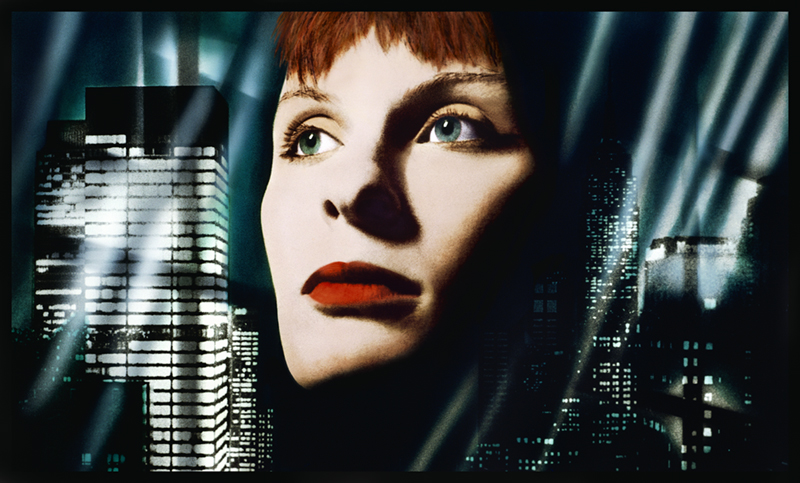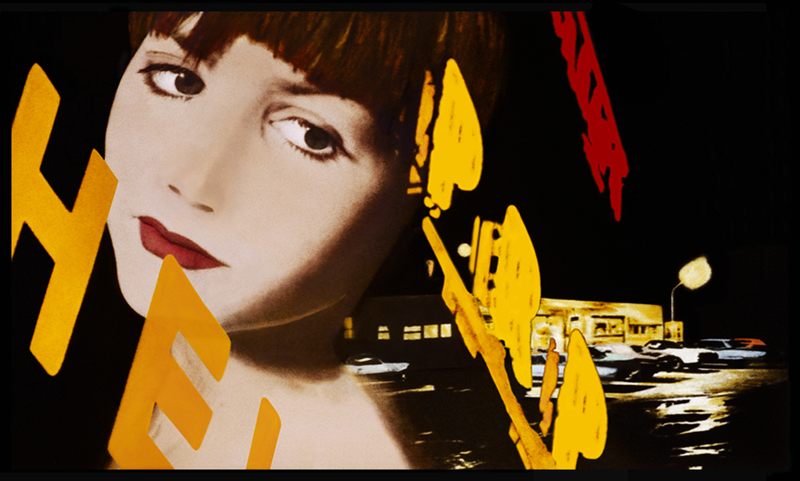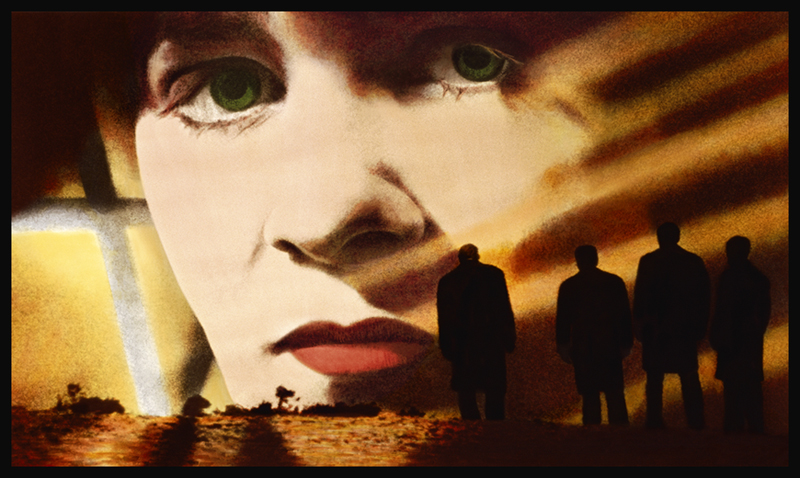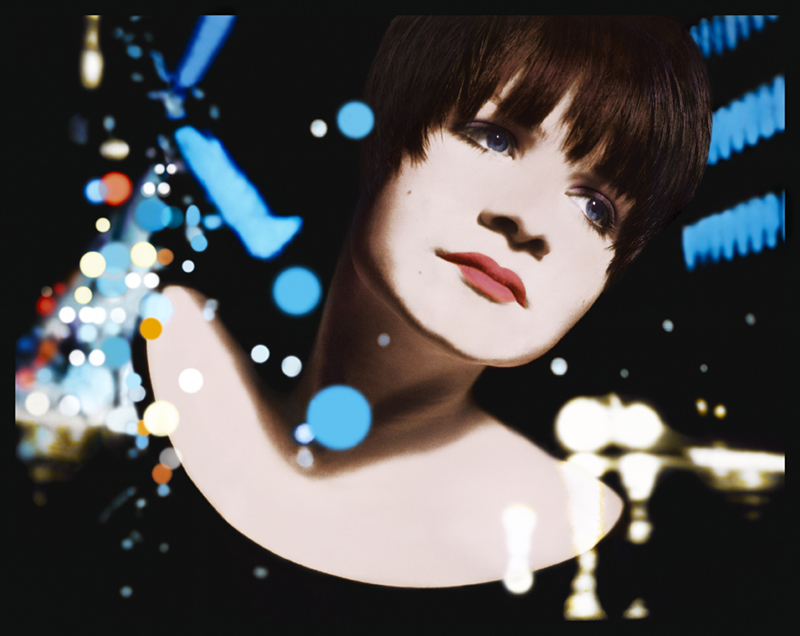Robyn Stacey | Redline 7000

enquire about this work
REDLINE 7000
Every Sunday morning WEA (Workers Education Association) had screenings of film noir movies in a very small room in the city. The intensity of the films was conveyed through the high-key lighting and dramatic cinematography, which also suited the female protagonists, who represented the archetypical tough, capable woman. These films were in a sense the underbelly to mainstream American culture, they were a resounding ‘No’ to the great American ‘Yes’, which propounded the idea that the sky was the limit in the land of the free, whereas “B” film characters were always at the mercy of events beyond their control.
“With their dramatic lighting, strong colour and layering of imagery, the photographs in this series – Ash, Flesh, Flame, Ice, Blue, Noir and Jet –are hand-coloured composites of images gathered from a range of sources, with the female faces photographed by the artist in the studio. The imagery is seamlessly montaged in the enlarger to produce screen-like photographs which function as signposts to filmic action: the result is the suggestion of one or more narratives within a single image, the viewer constructing characters, location and script from the clues provided.”
“The title of the series derives from a 1965 Howard Hawkes film Red Line 7000, which references the red line on a car’s speedometer to indicate the danger zone. Ice is bold and slick, the photograph looking back to the sexuality and power of the heroines of postwar American crime dramas as well as forward, pre-dating TV series Sex and the City by a decade. Her interest lies in her screen sirens, and the inevitable narratives that entangle them with each new reading.
In these early series Stacey’s approach to photography is more akin to a painter or a printmaker, building up the image like layering oil paint or manipulating marks on an etching plate. Continuing the tradition established in Kiss Kiss Bang Bang the models were friends of the artist, and the images were first shot on black-and-white film. The montaged images in Redline 7000 were also hand-coloured, and re-photographed onto a transparency and printed as gloss Cibachrome. Stacey’s hand-colouring reflects an intimate connection with the labour of constructing the image—hand-colouring photographs has been women’s work since the birth of photography in the early nineteenth century.”
Robyn Stacey
Redline 7000

enquire about this work

enquire about this work

enquire about this work

enquire about this work

enquire about this work

enquire about this work

enquire about this work
REDLINE 7000
Every Sunday morning WEA (Workers Education Association) had screenings of film noir movies in a very small room in the city. The intensity of the films was conveyed through the high-key lighting and dramatic cinematography, which also suited the female protagonists, who represented the archetypical tough, capable woman. These films were in a sense the underbelly to mainstream American culture, they were a resounding ‘No’ to the great American ‘Yes’, which propounded the idea that the sky was the limit in the land of the free, whereas “B” film characters were always at the mercy of events beyond their control.
“With their dramatic lighting, strong colour and layering of imagery, the photographs in this series – Ash, Flesh, Flame, Ice, Blue, Noir and Jet –are hand-coloured composites of images gathered from a range of sources, with the female faces photographed by the artist in the studio. The imagery is seamlessly montaged in the enlarger to produce screen-like photographs which function as signposts to filmic action: the result is the suggestion of one or more narratives within a single image, the viewer constructing characters, location and script from the clues provided.”
“The title of the series derives from a 1965 Howard Hawkes film Red Line 7000, which references the red line on a car’s speedometer to indicate the danger zone. Ice is bold and slick, the photograph looking back to the sexuality and power of the heroines of postwar American crime dramas as well as forward, pre-dating TV series Sex and the City by a decade. Her interest lies in her screen sirens, and the inevitable narratives that entangle them with each new reading.
In these early series Stacey’s approach to photography is more akin to a painter or a printmaker, building up the image like layering oil paint or manipulating marks on an etching plate. Continuing the tradition established in Kiss Kiss Bang Bang the models were friends of the artist, and the images were first shot on black-and-white film. The montaged images in Redline 7000 were also hand-coloured, and re-photographed onto a transparency and printed as gloss Cibachrome. Stacey’s hand-colouring reflects an intimate connection with the labour of constructing the image—hand-colouring photographs has been women’s work since the birth of photography in the early nineteenth century.”